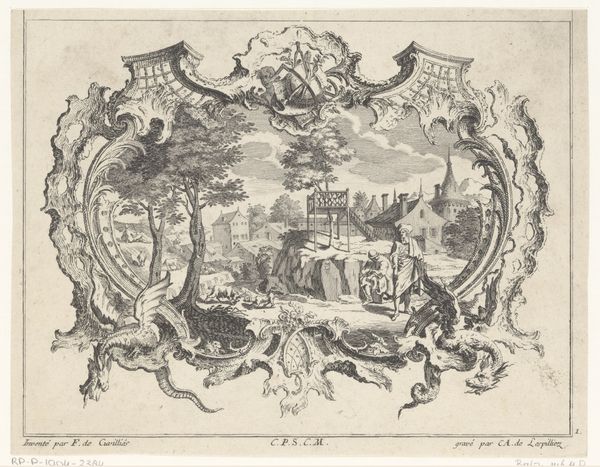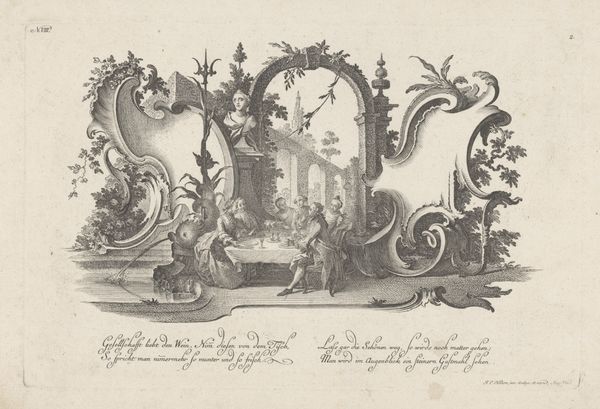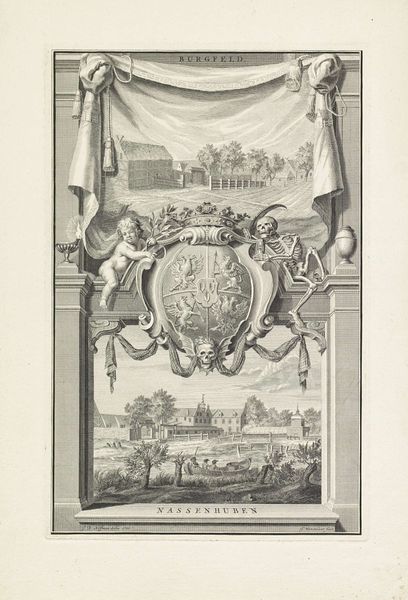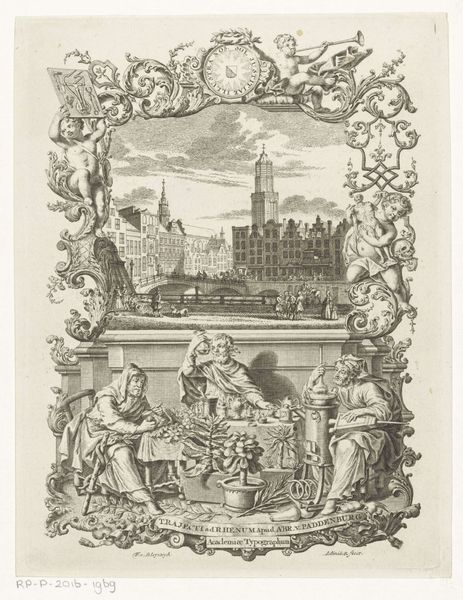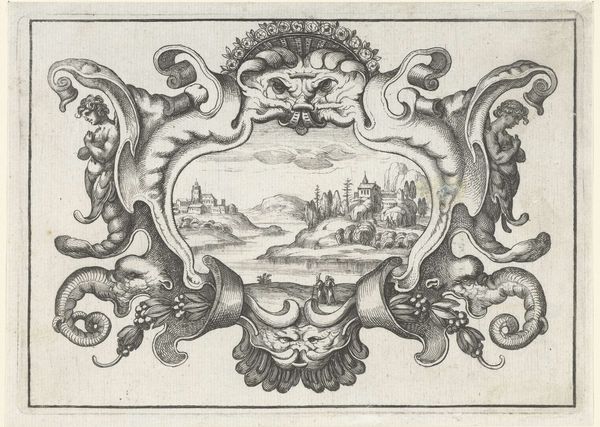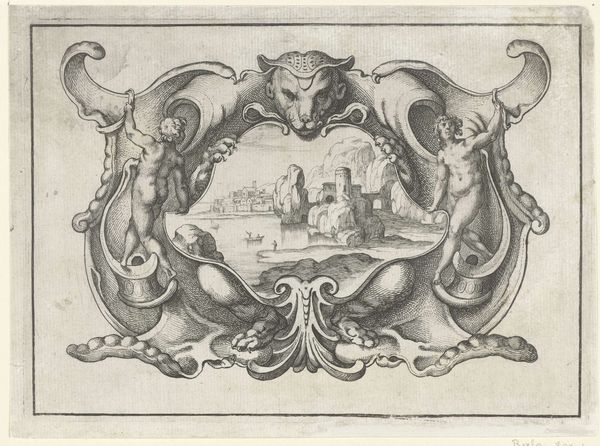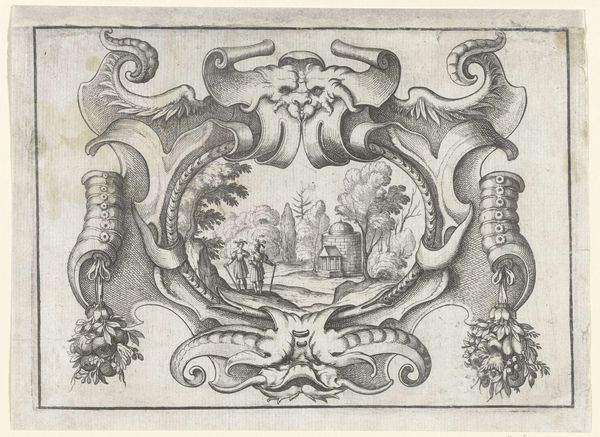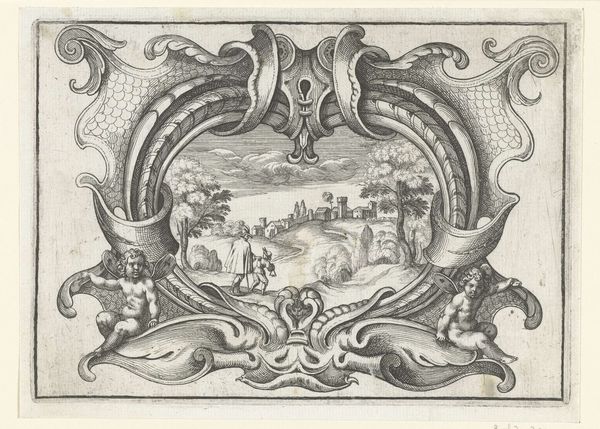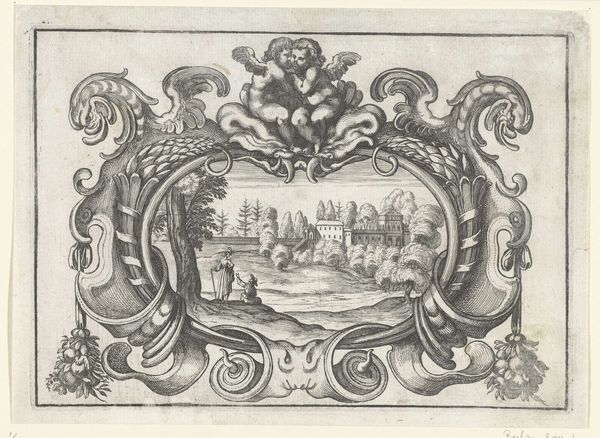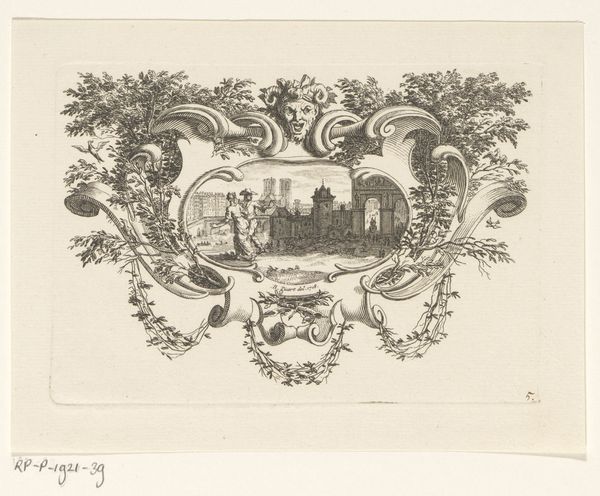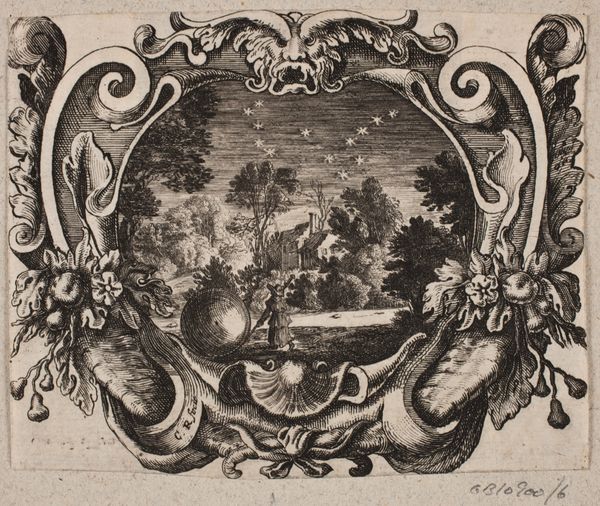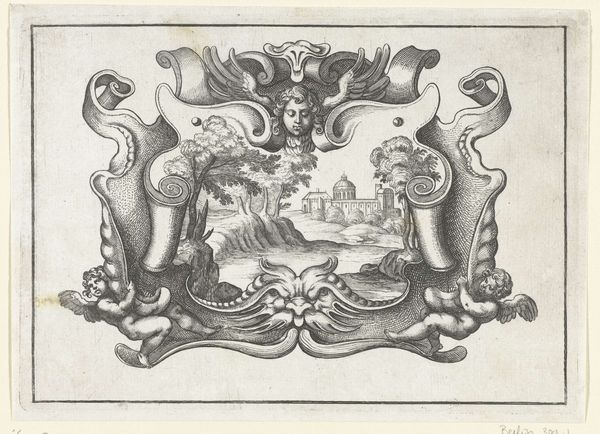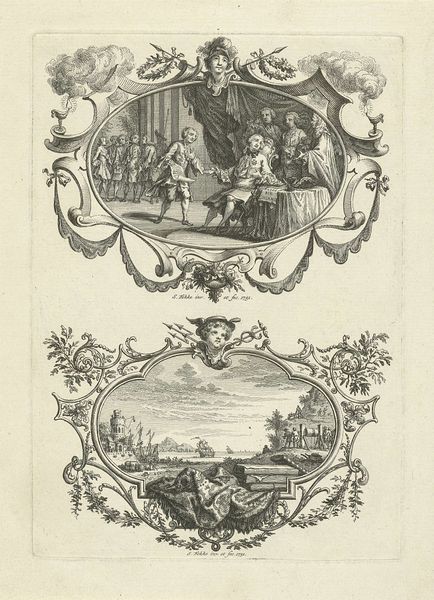
print, etching, intaglio, engraving
#
baroque
# print
#
etching
#
intaglio
#
landscape
#
figuration
#
genre-painting
#
engraving
Dimensions: height 93 mm, width 132 mm
Copyright: Rijks Museum: Open Domain
Editor: This etching and engraving, “Liefdespaar in tuin,” created by Bernard Picart in 1718, depicts a couple in a garden scene, framed by baroque ornamentation. I’m immediately struck by the contrast between the delicate details of the central image and the somewhat jarring face at the top. How do you see this piece in relation to its time? Curator: The key here is understanding printmaking not as mere reproduction, but as a crucial form of material production in the 18th century. Consider the labor involved in creating such a detailed engraving. Picart wasn't just an artist; he was a skilled craftsman participating in a network of production and consumption. Editor: So, you’re focusing on the making of the artwork itself? What about the image and its subjects? Curator: The “genre painting” aspect is really where we can see this playing out. Genre scenes, especially when mass-produced, reflect the tastes and values of the burgeoning middle class. It shows that representations of leisure and idyllic love were becoming commodities, shaping and being shaped by consumer desires. Editor: Interesting! The relationship between the image and the material conditions of its production… Curator: Exactly. We have to examine the historical circumstances in which prints were not simply ‘art’ but essential vehicles for disseminating ideas, constructing social identities, and fostering economic activity. This intaglio challenges distinctions between "high art" and the print shop. Editor: That gives me a completely different way of appreciating the print. I was so focused on the subject matter, I missed the point that it's an artifact of a very specific industrial process, responding to material and societal forces. Curator: Precisely! Thinking about art in terms of materials, production, and consumption allows us to connect it more deeply to the social fabric of its time.
Comments
No comments
Be the first to comment and join the conversation on the ultimate creative platform.
